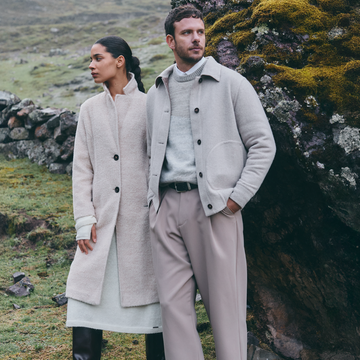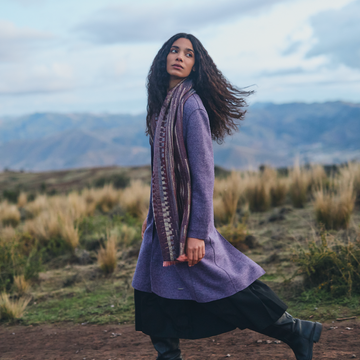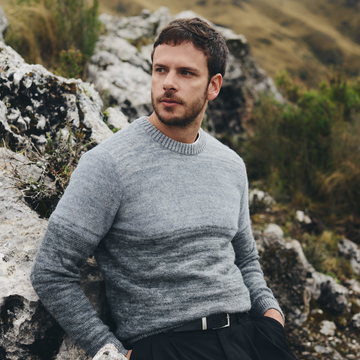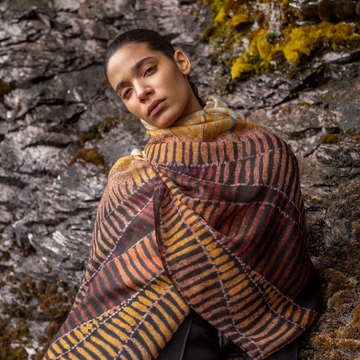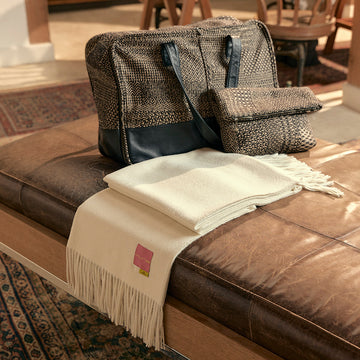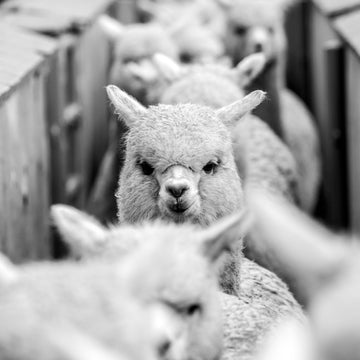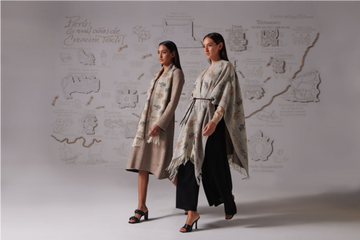KUNA MILLENIUM
A Tribute to Over 3,500 Years of Textile History, the most significant Peruvian contribution to the history of universal art is undoubtedly found in "the textiles produced in the period between approximately 1,400 B.C. and 1,600 A.D." — Artist Fernando de Szyszlo
It was due to the mastery achieved by various cultures of the Andes that they came to be recognized as a textile mecca, whose heritage in weaving has traveled around the world. With the responsibility of preserving the beautiful textile work of these cultures, Kuna envisions creating clothing and accessories capable of dazzling the world while continuing this millennia-old tradition we have received as a legacy.
This philosophy is perfectly reflected in our Millennium collection, which seeks to recreate the feats of technique and textile beauty achieved by ancient Peruvian weavers. The contributions of our ancestors are too diverse and extensive to enumerate, as their development spans over 3,500 years of history. However, we can get an idea by naming just a few of the cultures that settled in the vast Andean territory: Chavín, Paracas, Mochica, Huari, Lambayeque, Nazca, Chimú, and Inca. This collection, which we conceived as a tribute to our homeland—the true cradle of talented textile artisans—is inspired by all of them.
An iconic piece of this collection is a limited-edition mural mantle that will be exhibited in the new terminal at the International Airport in Lima. The mural mantle is woven with very fine threads of Royal Alpaca and silk; it is double-sided, with different color shades on each side, and measures 1.85 m wide by 3.66 m high. Its wonderful weave and warp pay tribute to the complex techniques, patterns, and motifs of the Huari, Lambayeque, and Nazca cultures.

MURAL MANTLE – DECORATIVE DESIGN OF KUNA MILLENIUM
The Mural Mantle, made in flat jacquard weave, was designed and woven at the Incalpaca factory by expert textile artists and modern master artisans. It is part of a legacy that continues to evolve and that, from Kuna, we wish to share with the world.

HUARI – The geometric representation is oriented around faces that have both frontal and profile aspects, thus constituting one of the "visual traps" to which the Andean weaver frequently resorts.

NAZCA – Paracas Necropolis, Early Horizon 10, ca. 700 to 500 B.C.: Anthropomorphic design alternates with four appendages ending in trophy heads. The body shape is similar to a bean pod.

LAMBAYEQUE – Design of birds holding frogs in their beaks. The swan likely represents authority, as it always wears a large crown on top. The real meaning of these iconographies is unknown; however, it can be inferred that often, such figures holding trophies in their mouths symbolize the capture of enemies.

NAZCA – Embroidered zoomorphic motifs.
Kuna. Feel the Hands of the Andes. kunastores.com Authors: Andrés Chaves and John Esquivel Bibliography consulted:
Textiles of the Andes | Catalog of Amano Collection | Selected by Yoshitaro Amano | Edited By Yukihiro Tsunoyama | Published by Dohosha
Arte Textil del Perú | Created and directed by José Antonio de Lavalle and José Alejandro González García | Industria Textil Piura
